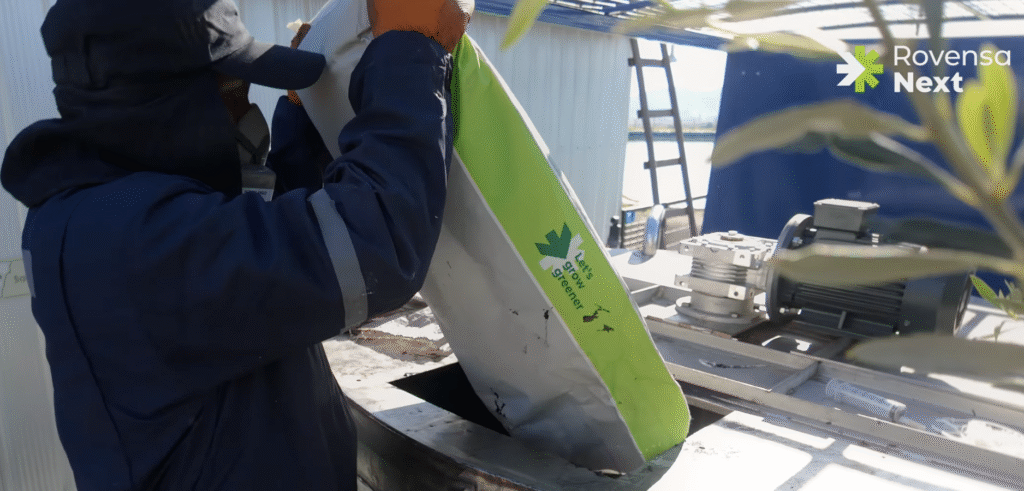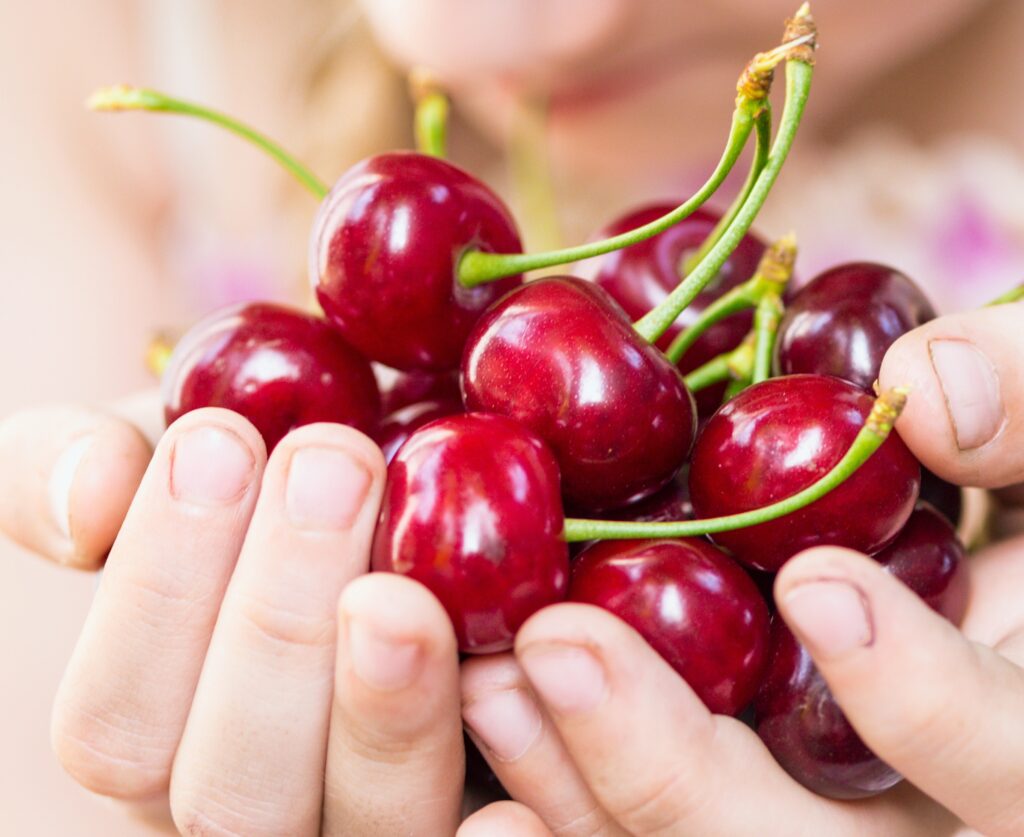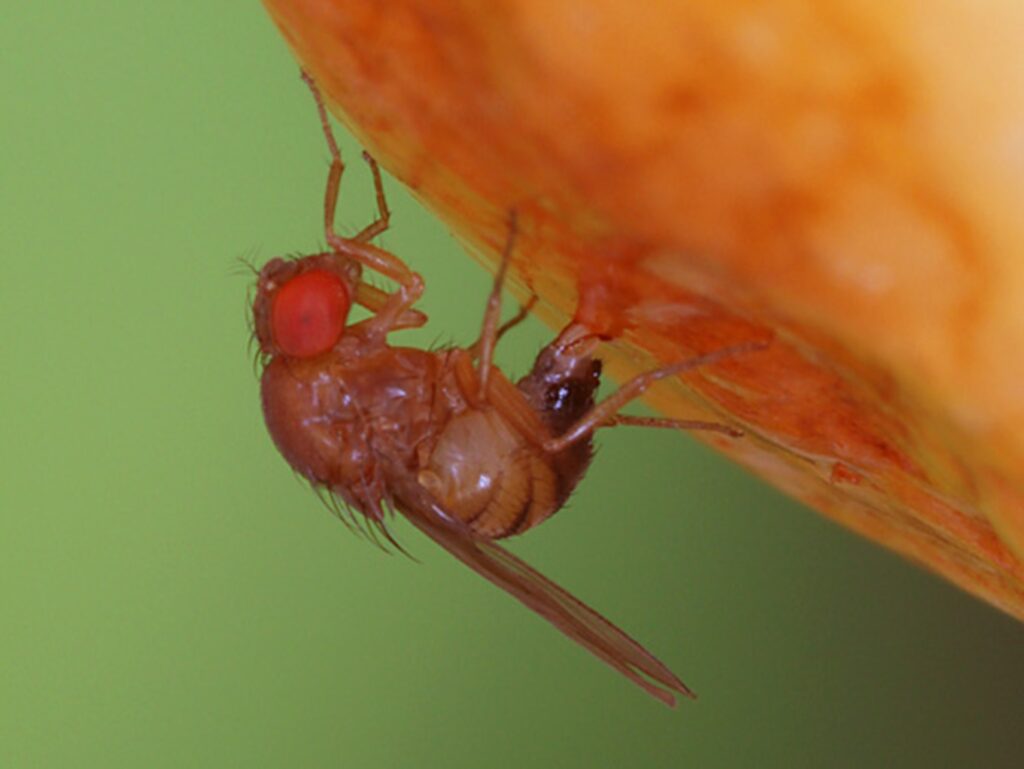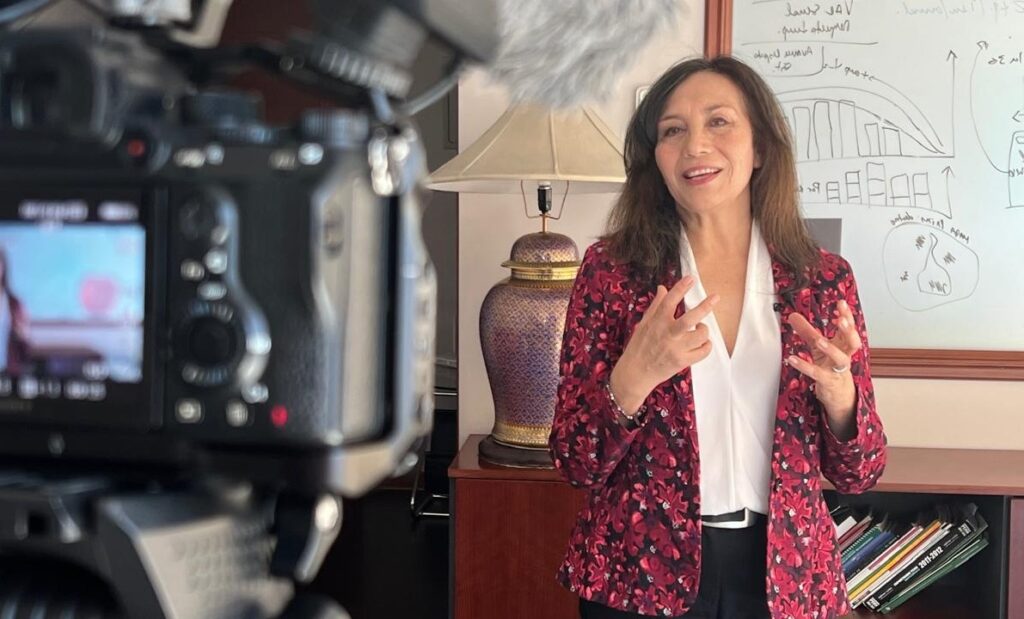The new era of plantations and orchard conversion. Critical points to be more successful than ever.
By: Bruno Tapia, Avium Technical Coordinator; Ricardo Rojas, Avium Technical Advisor; Carlos Tapia, Avium Technical Director.
Taking the step to invest in an agricultural project has always been challenging, especially at this stage in the cherry industry.
The challenges are not only present due to exposure to climatic or commercial factors, but also due to technical factors, since in order to achieve success in the project, good planning, management and execution from its conception are essential. Therefore, it becomes important to take into consideration the different factors and actors that play a leading role in the development of the project. Such is the case of the formulation and execution of a cherry project today, based on technically key aspects, such as the variety, the rootstock and the training system, which will directly depend on the climate, soil and cultural tasks associated with the desired management.
1. Property knowledge.
To begin and determine the next steps, it is vitally important to fully understand the property on which work will be carried out; to do so, a complete soil study must be carried out (effective depth, physical and/or chemical impediments, textural, chemical and biological analysis) and a thorough agroclimatological study, in order to have the greatest amount of information to make the best decisions according to each reality and not fall into the common error of taking neighbouring projects as a reference. This study must be complemented with the review in situ by the technical team, through the review of test pits. (Photo 1).
Among the analyses that can be used today and complement the empirical and "casuistic" there is a varied offer, from the use of electrical conductivity maps where the different imperfections of the soils can be visualized in depth, the use of drones for planimetry and images and even complementing it with satellite images through the use of multispectral images and orthophotos to gain greater knowledge of the soil.
However, this does not end with the on-site analysis on each property, which, through the use of spatially distributed test pits to be representative, brings together all the details for decision-making, such as the rootstock to be used, planting density, planting direction, use of flowerbeds, need for drainage, etc.
Photo 1: Map of variability of soil electrical conductivity (CEM) and subsequent analysis of test pits.


… Now, what happens with the replanting projects?
An important question is being asked today by some producers who must necessarily replace old plantations with new projects.
Apart from what has been described above in terms of analysis, it is very important to focus on possible problems that could affect the normal development of a new replanting project.
Some concerns that are present today in this type of conversion are raised.
- Presence of soil larvae.
- Presence of nematodes. Genus and severity if present.
- Presence of fungi and bacteria. It is very important to be able to perform a specific analysis for the pathogen that needs to be found if it is present.
These concerns are not only considered to be taken into account in a replanting project, but also in a new project to begin with as much information as possible.
This will determine what management should be carried out prior to planting, such as possible fumigations, application of organic amendments, and application of phytosanitary and biological products to prevent future problems.
2. Selection of the variety/rootstock.
The first step is to define the best variety according to the climate where the orchard will be established, determined by the chill hour requirements for each variety; in warmer areas, for example, and with an early harvest, varieties that are a good commercial alternative if harvested before November 25th. On the other hand, in a colder area it will be advisable to focus on varieties that allow the harvest to be extended, from the last 10 days of December, while in intermediate areas, it is recommended to look for varieties that can be competitive against the large volume of fruit at the time.
Once the variety to be planted has been selected, it is important to choose the rootstock that will accompany it, combining both the type of soil and the variety/rootstock combination, which translates into the use of varieties with greater setting together with more vigorous rootstocks (Figure 1), and varieties with less setting with less vigorous rootstocks to achieve a technical balance between the fruit and the leaves, better known as the leaf/fruit ratio (Figure 2).
Figure 1. Vigor and Fertility of the different rootstocks.

Figure 2. Leaf/Fruit Relationship.

3. Choice of driving system.
The conduction system will be determined by three main factors: the way of working that best suits the producer and/or has experience, the variety/rootstock combination and the most efficient systems in the use of labor, the latter being those that will compete with advantage to maximize the productivity of the workers. The weaker the combination, the greater the focus on the central axis, considering not abusing the dilution of a predetermined vigor according to the characteristics of the site to be planted; while, the more vigorous, the greater the tendency to vigor dilution systems, such as Y-Trellis or KGB training systems.
For example, for highly water-retentive and clayey soils, the Colt rootstock is the most suitable, while in lighter soils the MaxMa 14 or MaxMa 60 series could be an alternative; in the case of loamy to clayey loam soils, the Gisela® series, which is conditional on Gisela® 5, 6 or 12, could also be an alternative. However, the Colt rootstock is the one that adapts to any site and any soil condition, but not to any variety.
4. Choosing the right plant.
Completed Plant.
Probably the plant format that offers the most security in a plantation project, it consists of a plant raised in a nursery after a year of establishment of the rootstock and another season of development of the variety. Logically, it is the most expensive and, at the same time, undoubtedly the format that requires the least administration once planted.
Bare root sleeping eye plant.
Rootstock developed in a nursery to achieve a minimum graft diameter of around 8-9 mm at its base in February. Once this objective has been achieved, a bud (or patch) graft is carried out at the base of these plants from material harvested in the season. In general, two patches are used to ensure take-up in spring. Acceptable quality for this type of plant is the diameter at the time of delivery, which should optimally exceed 8 mm at the base.
Plant grafted into the ground.
In recent years, the way of establishing the plantation has been changing and one of the good experiences in practice has been through the use of one-season rootstocks raised in a nursery and grafted in the field, by means of scion grafting or winter splicing. The rootstocks must have at least 8 mm. in diameter at the base to be of graftable quality, mainly so that the diameter is in accordance with the grafting material. This last point is important at the time of quality control of the grafting.
Container or bag plant.
Rootstock established directly in the container or bag on a substrate or mix that allows a rapid establishment of the seedling and subsequent development. They aim to reach graft diameter towards the end of summer and are a safe way out when establishing rootstock seedlings late in the season, even in December. These plants can be grafted from dormant shoots in summer or from buds at winter exits, depending on the nursery strategy, often in common agreement with the producer based on the establishment of his orchard.
to develop a new planting project.
5. Establishment.
Continuing with the logical chronology for the development of a new project, special care must be taken in the initial stage of the project, to achieve the productive potential, which, regardless of the variety, conduction system, type of plant or planting density, must seek the following objectives to achieve it.
5.1 Soil preparation.

A task that has become increasingly important over time due to its real impact on the productive potential of a garden is soil preparation, understanding that it is not only physical, but also chemical and biological, whose components together will define our future.
The work on preparing the subsoil and the topsoil is aimed at breaking up physical impediments in the soil, encouraging root exploration, ensuring good drainage and increasing the water retention capacity of the profile to promote good plant development in order to achieve our ultimate goal of potential.
To prepare the subsoil, the correct choice of machinery will depend on the type of soil, humidity and its physical limitations, that is, in general terms, a soil with physical impediments such as cementitious strata called duripanes or fragipanes, or soils with a high percentage of stoniness and a lower percentage of humidity in the profile, we must lean towards a Bulldozer; however, in the presence of soils without physical limitations such as those described above, we can use an excavator with a claw without problems.
To advance the arable layer (first 30 cm) harrows and chisel plows are used (called Jympa), to achieve a soil breakdown into smaller parts. It is at this stage that we can make chemical corrections through amendments and then build, if necessary, the ridges or flowerbeds, either to seek greater effective soil depth or just as an alternative to promote the correct drainage of surface runoff in winter. The ideal deadline to have the preparation finished is May 1st.
5.2 Plantation.
This is a stage that is as important, or even more important, than soil preparation, since it is only carried out once in the life of the project. Therefore, a suitable hole must be found so that the roots are loose, without being rolled up or pointing in the opposite direction to the soil, using a small lift of the plant before finishing covering the hole and very well plumbed perpendicular to the soil, seeking better plant development.
Planting deadline.
Plant completed: July 31.
Sleepy Eye Plant: July 31st.
Plant for grafting in the ground: planting on July 15 and grafting by August 10.
Plant in bag or container: November 10.
The above can only be carried out once the irrigation system has been completed, tested and is working, since with the national trend towards low rainfall, the risk must be assumed and irrigated before and during the planting process of a new project.
6. Training.
The formation of the project is as important or more important than the establishment, considering that it consists of three stages; the first, where the base of the “skeleton” of the plants is built, whether it is one, two or several axes. The second stage will be to complete the “skeleton” formed in the first year, branching the plants using different strategies to obtain the so-called “mother branches”, a key stage for the success of the project; finally, in the last stage, the “balance” of the branches within the plant is sought, analyzing the scenario in winter and carrying out the first initial renewal pruning, eliminating the very vigorous ones. It should be noted that the stages and processes described above are fundamental when venturing into the realization of a cherry orchard model, since each property has unique characteristics, both in soil type, rainfall, among others, all aspects determining the success or failure of a new planting project.
Regardless of the training system used, a cherry orchard must have a production potential of at least 12 tons/ha to be competitive. However, to reach this number and maintain it over time, many tasks must be carried out that concern the training stage of the projects. After that, maintenance and reproductive/vegetative balance are the fundamental basis of this productive potential.
Once “on the bike”: What type/age of wood should I have the fruit centers in order to have quality fruit and production potential?
The quality of the fruit is defined by the leaf/fruit ratio of the tree, and also by the capacity of each fruiting centre (sapling or base of a one-year-old branch) to feed the quantity of fruit it contains. This capacity is greater when the saplings are inserted into a branch section of an optimal diameter. However, the thickest branches within a plant tend to favour the vegetative part and begin to branch excessively, especially when they have been heavily pruned in winter. For this reason, the most important thing is to manage the concept of balance in trees, that is, we must form a tree with branches that are balanced between them, eliminating both extremes, the very thick branches and the very thin ones.
It is very important that all this analysis begins once the garden has been established, since the success of completing each of the stages of the project depends on these tasks.
Going back, when establishing a new garden the following should be considered:
First stage of training
After planting the orchard, the most important thing is to promote the base of the “skeleton of the trees”. If it is an axis-based system, this should be achieved in that season. develop the best axes, with over 2 meters of height, good buds and internodes, and (in our case) without laterals that can “over-develop” the following season and go against an optimal balance. Any intervention on the axis in development in the first season, that is, an early branching, is a signal contrary to the development of the roots. This is how axes intervened in green with the aim of advancing branching, wrongly in many cases, end up with very heterogeneous orchards and with their roots not fully expressed during that season.
To obtain these “good axes”, both in a central axis and in its variations (YV Trellis, double axes, etc.) it is essential to develop them in the garden from 40 or 50 cm. This is why it is recommended that the gardens established from a finished plant be lowered at the time of planting. In this way, you start with a fully rooted plant and with a “0 kilometer” axis.
In KGB, however, this base of the “skeleton” is the crown from which all the branches will emerge. This crown must be well lit so that the garden will continue to reproduce branches in the future.

Second stage of training
After completing the initial stage and ensuring a good primary structure of the trees, the objective now is to complete the “skeleton” of the plants, which means obtaining the structures that will give way to production. Generally, we speak of “mother branches” where the future fruit centers (especially shoots) will be housed and which do not necessarily have to be permanent, but are expected to be able to complete a productive cycle and then be renewed.

Branching work is a critical point in the formation of an orchard., since it is essential that a minimum number of branches are generated with a development of at least 70-80 cm in length, and ideally from 50-60 cm in height of the axis.
Within the branching techniques we can find different ideas and procedures that allow us to branch trees and obtain this structure. Without going into detail about which of the techniques is the best, three important points can be highlighted in the branching process: SUPERVISION, SUPERVISION AND SUPERVISIONThe most important thing in the formation and development of orchards, which partially defines the homogeneity and production potential of the project. The great and most relevant difference between success and failure in the formation of plants, is the lack of analysis and supervision that must be done permanently from the beginning to the end of the branching process.
A well-branched tree is a tree that is balanced from the start. In spring, when these lateral growths are already beginning to take shape, it is advisable to at least consider the procedure and need for orthopedics, where many times you can start with the toothpick position and finish by tying up already developed branches towards the end of summer. This will allow you to begin to “balance” the tree to promote its early entry into production.

Third stage of training
When the skeleton or permanent structure is already defined, the most important thing is identify the balance of each one of the plants, this was already analyzed the following winter.
This analysis is done from the critical point of view of structural balance, so that all growths that are above this “balance” are eliminated. The elimination of over-vigorous branches, considered as initial renewal pruning, is to leave a “block” that allows new growths with a vigor according to the average of the plant. This point is reproducible to all the conduction systems, since in all of them we must maintain a balance between the branches that are forming the plant. It is important to analyze the balance in each section of the plant, since a branch of medium vigor in the lower part is probably vigorous in the upper part, and must be eliminated to maintain this balance above, where we need better control of the growth to allow the entry of light.
Photo 3. First renewal pruning with the aim of balancing the plant. (Courtesy of Manuel Brión G. Agricultural Engineer, Exportadora del Sur).
Throughout the productive life of the orchard, it is very important to maintain this concept of “balance” by renewing branches, since we must base production on young shoots that are the ones that could maintain a high potential. However, the above is under permanent study by different specialists and there is still no consensus that the older the shoot, the lower the quality of the fruit.
Regardless of the age of the orchard, it should always look visually “young” with vigor, healthy shoots and balanced branches that provide very good quality fruit. This is why we should speak of the concept of “permanent renewal” and not of a technique. It should also be considered that this concept of balance, which allows the structure to be in constant evolution, is manageable from the year of branching. Once the plants enter a productive state, and often in a vicious circle of very vigorous branches, shade and wood wear, renewal is not always safe and successful.
Finally, this retrofit model fits seamlessly into all existing driving systems, from a traditional centre axle, Y-Trellis, Tatura, higher density axles, and most importantly in training models such as KGB and UFO.










